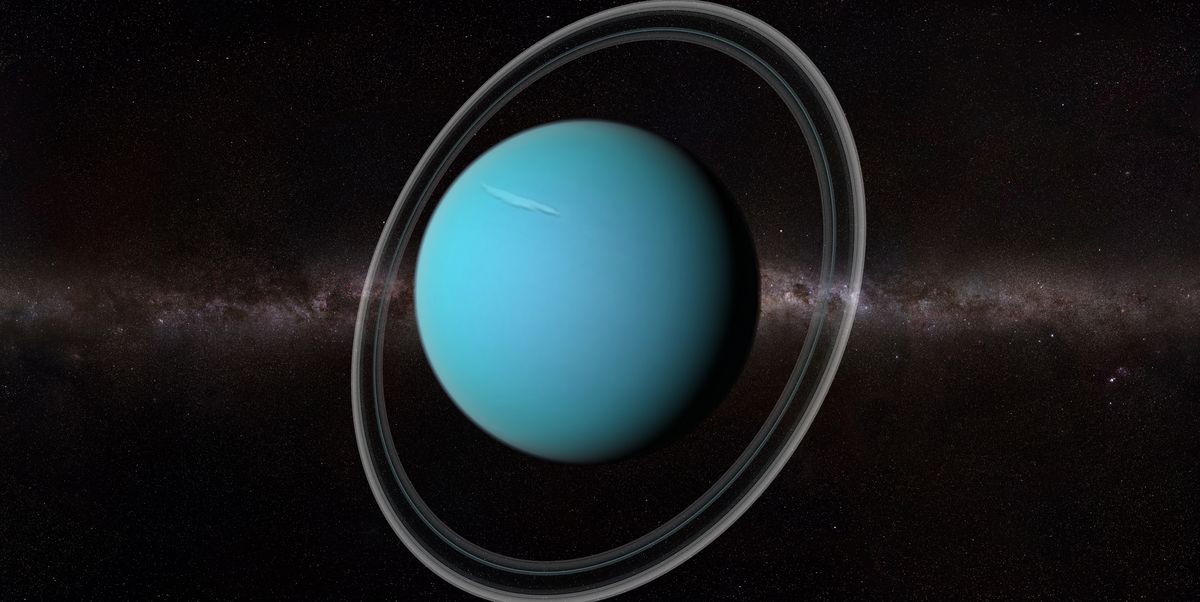Uranus is a mysterious ice giant located billions of kilometers away from us in the solar system. Uranus is the seventh planet, from the sun. Only Neptune and the dwarf planet Pluto float farther out into space.
What gives Uranus its blue glow?
Uranus is similar to its immediate neighbor Neptune in many ways. Both planets are called ice giants without a solid surface, with atmospheres made up mainly of hydrogen and helium. The atmospheres of both Uranus and Neptune contain small amounts of methane, which gives the planets a blue glow: methane absorbs the red sunlight.
However, the color of Uranus is much lighter than that of Neptune. A team from the American research center NOIRLab in 2022 found out how this is possible: Uranus has a thick layer of haze, which makes the color of the planet less bright than that of Neptune. If it were not for this haze, both planets would have the same blue color.
Are there pictures of Uranus?
certainly. NASA’s Voyager 2 space probe took the first picture of the blue planet in 1986, during a trip through the outer planets of our solar system. After its launch in 1977, the unmanned spacecraft took nearly 11 years to reach Uranus. Flew on January 24, 1986 Voyager 2 As the first space probe to fly over the ice giant.
But technology does not stand still: there are now better pictures of the planet. The James Webb Space Telescope captured a beautiful image of Uranus in 2023, which also shows the planet’s moons and rings.
Space missions to Uranus
Meanwhile, 27 moons of Uranus have been discovered and we know that the planet has 11 rings. The nine inner rings are thin and dark grey, while the two outer rings are red and blue.
At the moment, no new space missions to Uranus are planned, but it will be impossible for spacecraft to land on this planet. Uranus consists of at least eighty percent of a frozen mixture of water, methane, and ammonia. Under it is a small rock core.
Seasons on Uranus
What makes Uranus really special, and unlike any other planet in our solar system, is the tilt with which it orbits the sun. Uranus is the only planet that rotates almost horizontally on its axis, rolling like a ball, instead of spinning vertically or slightly tilted like Earth and other planets.
This rotation, which may be due to a collision with another object in space, creates special seasons on Uranus. During a quarter of a year on Uranus, the sun shines directly on one of the poles. The other pole is shrouded in darkness during that period.
Such a dark winter on Uranus also lasts much longer than on Earth. The planet orbits the sun in 84 Earth years, which makes the season on the planet last 21 years.
On the other hand, the day on Uranus lasts a little shorter: the planet rotates on its own axis in about sixteen hours. Uranus is also an oddity in our solar system in this regard. Earth rotates from west to east, but Uranus goes the other way. Venus is the only other planet that rotates in the opposite direction.
Is life possible on Uranus?
Space missions have given us a pretty good idea of what Uranus looks like. But there is also a lot to learn about this planet. One of the greatest mysteries: is life possible on Uranus? For now, NASA considers that chance to be small.
According to the space agency, the pressures and temperatures on Uranus and its composition are very extreme. For example, the average temperature on Uranus is -195 degrees Celsius. Uranus is so far from the Sun that it takes sunlight two hours and forty minutes to reach the planet. For comparison: sunlight reaches Earth in eight minutes.
Willicky Van Dorn studied journalism, traveled the world for a while, and eventually ended up working with the editors of Quest, National Geographic, and Runner’s World across the US, Australia, and New Zealand. Curious to know the world, she prefers to travel every month and always take her running shoes with her.

“Total coffee specialist. Hardcore reader. Incurable music scholar. Web guru. Freelance troublemaker. Problem solver. Travel trailblazer.”







More Stories
GALA lacks a chapter on e-health
Weird beer can taste really good.
Planets contain much more water than previously thought